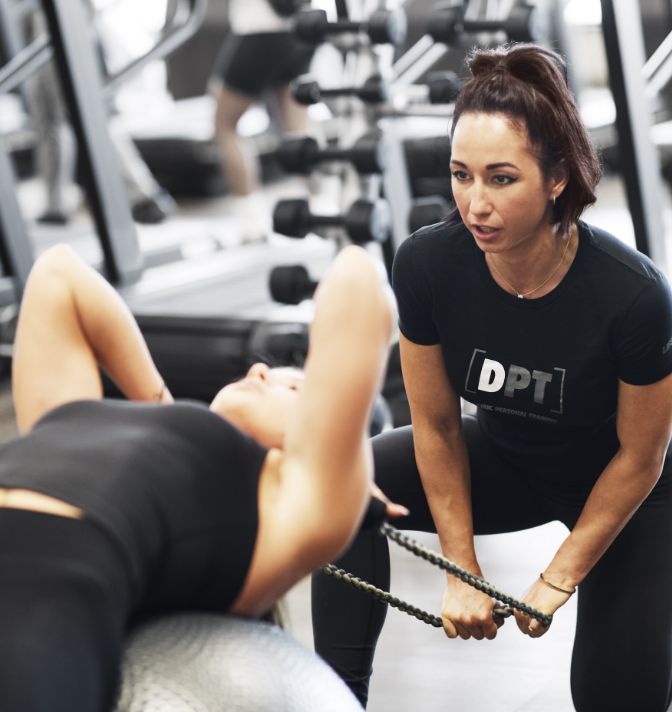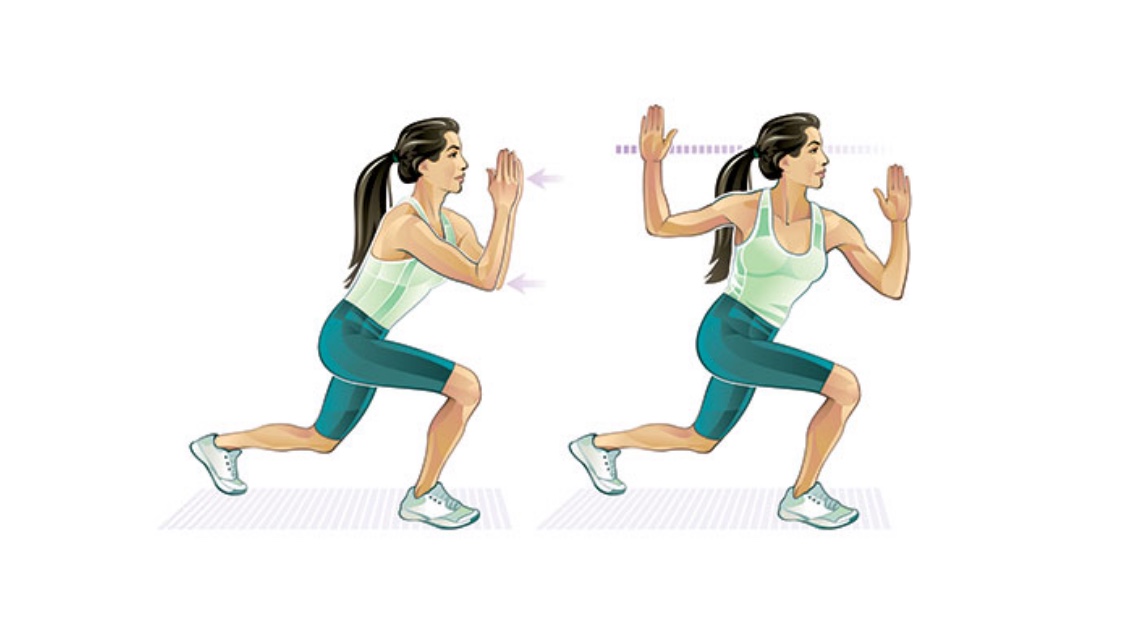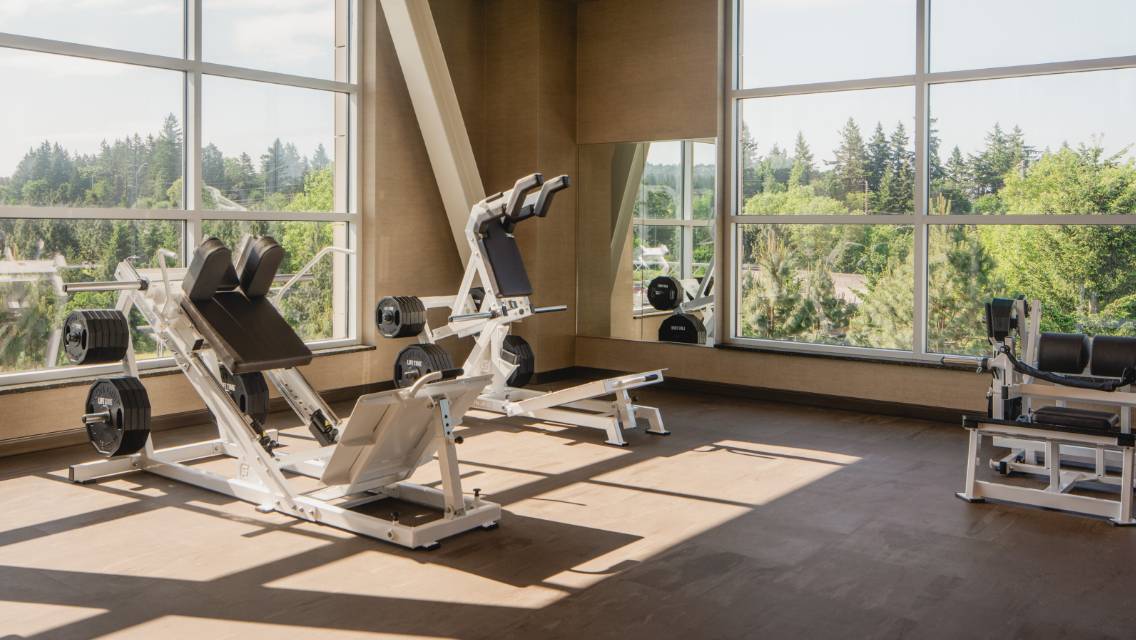Whether you regularly play 18 holes, or you only swing clubs a few times a year, your golf game — like your performance in most sports — can benefit from a little preparation. Yet just as many of us breeze past the warm-up portion of our workouts, many golfers don’t adequately warm-up before stepping onto the tee box.
“Given the extensive use of lower-body movements in golf, a thorough warm-up is vital to prevent injuries and optimize performance,” says Makoto Matsuo, Dynamic Personal Trainer and lead general at Life Time Sky (Manhattan) in New York. “Mobility plays an important role as it enables you to stabilize your body throughout the swing, maintaining balance and control over the clubhead. The greater control you have, you can generate more clubhead speed.”
And while physical readiness is important, Matsuo stresses that golf is undeniably a mental game, and any physical discomfort can significantly impact your performance. “Professional golfers typically invest 30 to 90 minutes in pre-round warm-ups for a reason,” he says.
Most golfers perform better when they prioritize strength training too, Matsuo says. This can serve not only as a safeguard for your joints, especially during the dynamic movement of a golf swing, but it can also enhance flexibility. Strong muscles can lead to a more stable body.
Matsuo, who golfs multiple times per week, put together this five-move workout to prepare you for playing golf — at the start of the season and anytime throughout it. If these movements are new to you, start with two sets of each; as your strength improves, work up to four sets. (For a more targeted workout, complete all the sets of each movement before moving on to the next. For a more heart-pumping workout, perform the moves as a circuit, completing between two and four rounds.)
Matsuo recommends incorporating this circuit into your regular workout routine one to three times per week. Alternatively, you can integrate the individual exercises into your existing workout regimen. Regardless, it’s important to be consistent with them before and during the golf season to maintain strength and flexibility.
1. Gorilla Kettlebell Rows
“This is a powerhouse exercise for building strength and it targets the upper back, shoulders, and biceps, enabling you to generate more torque on the shaft and, consequently, increase your speed,” says Matsuo.
- Stand with your feet shoulder width apart or slightly wider, with two kettlebells between your feet.
- Hinge your hips back and bend your knees until you can reach the handles of both kettlebells.
- Grasp the kettlebells, then row them one at a time, alternating sides. As you row up with one side, push down into the opposite kettlebell on the floor. Don’t allow your hips or upper body to rise up.
- Perform 8 to 10 reps per side.
2. Standing Barbell Rotation
“Ideal for enhancing core stability — which can add more rotational power to your swing — this exercise demands control and coordination as you rotate the barbell while keeping your core tight and torso stable,” says Matsuo. “It not only strengthens the core muscles but also improves rotational power.”
- Stand facing the anchor point with your feet hip width apart. Hold the free end of the barbell in front of your body with your hands stacked and elbows slightly bent.
- Keeping your hips facing forward, use only your arms to move the barbell to one side of your body. Once you’ve gone as far as you’re able without twisting your torso, move the barbell to the other side of your body.
- Perform 12 to 15 reps per side.
3. Kettlebell Step Up with Knee Drive
“This dynamic movement targets the hip flexors, leg strength, and core stability,” says Matsuo. “By incorporating a knee drive motion, this exercise emphasizes balance and coordination while addressing strength imbalances between the lower body and core muscles.”
- Stand in front of a box with your feet shoulder width apart, and a kettlebell in your right hand.
- Place your left foot onto the box and step up, driving your right knee into the air. Engage your core for stability.
- You can either step down and continue the reps focusing on the same leg, or you can alternate legs. Either way, it’s crucial to prioritize balance throughout the exercise.
- Perform 8 to 10 reps per side. (If this seems too challenging at first, consider starting with 4 to 6 reps, then building up to 8 to 10 reps.)
4. Kettlebell Suitcase Deadlift
“Focusing on proper hip hinge mechanics, this exercise is effective for strengthening the lower back, hamstring, and glutes,” Matsuo says. “This compound movement promotes optimal movement patterns, and will contribute to enhancing the power and strength of your golf game.”
- Standing with your feet shoulder width apart and your arms at your sides, place a kettlebell just outside of your right foot.
- Hinge your hips back and bend your knees, lowering to grab the kettlebell with your right hand.
- Stand up tall with control.
- Lower back down with control to place the kettlebell back on the ground.
- Perform 8 to 10 reps per side.
5. Split Stance Pallof Hold
“Challenging the glutes and abdominal muscles, this exercise is functional and improves core stability and posture,” says Matsuo. “By resisting rotational forces, this helps develop a strong and resilient core, reducing the risk of injury during dynamic movements like a golf swing.”
- Anchor a resistance band at about core height, then stand perpendicular to the anchor point and step your inside foot back so your feet are in a split stance.
- Straighten your arms out in front of you at about chest height; there should be tension in the band (if not, step farther away from the anchor point).
- Hold for 10 to 30 seconds.
- Repeat on the opposite side.





